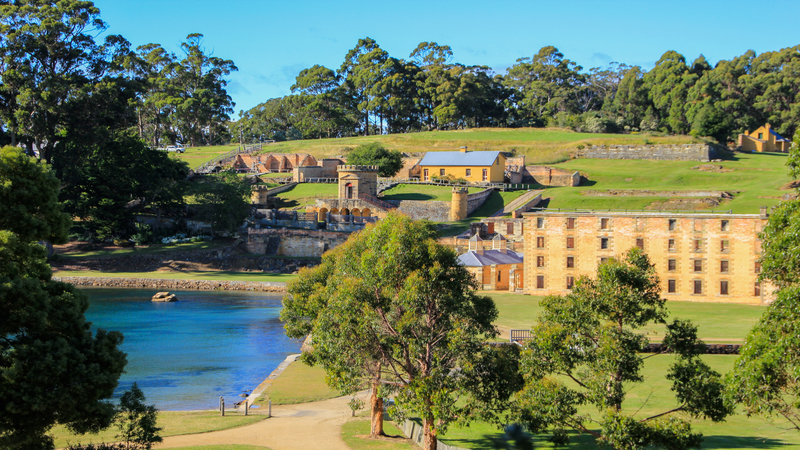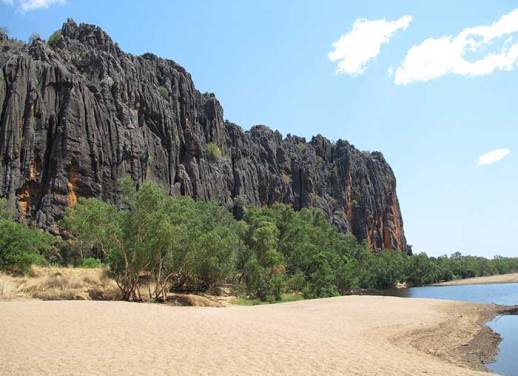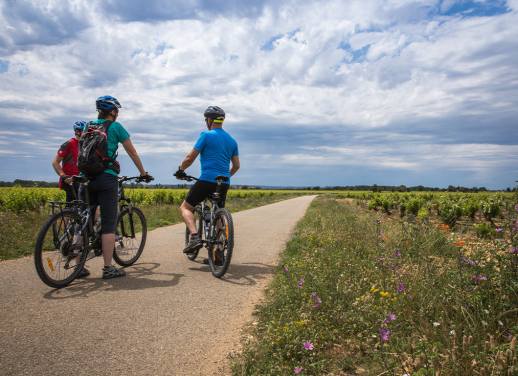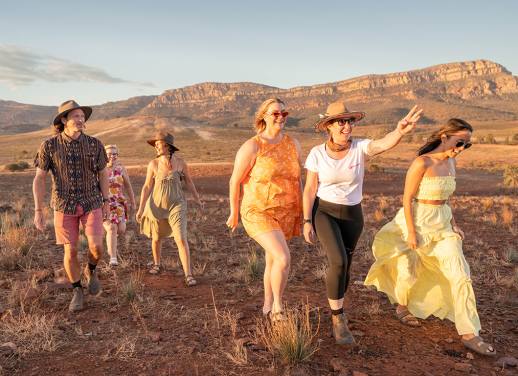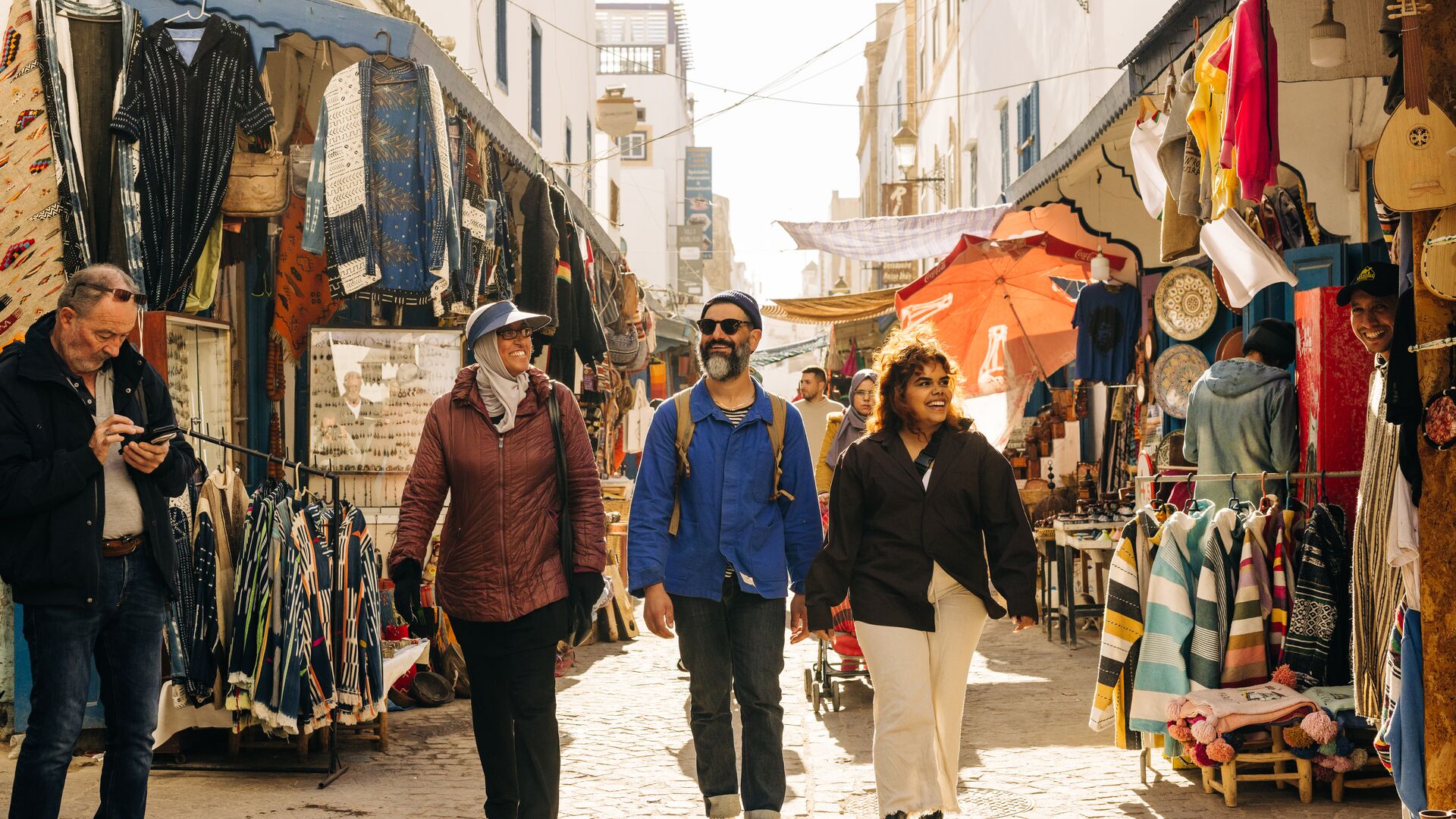Art in Australia and New Zealand takes many different forms, from strolling through an open-air gallery filled with 1930s Art Deco architecture to a sculpture that poops once a day, a shiny Britten V-1000 motorbike, cutting edge video installations, and an Aboriginal rock art gallery housing paintings that are more than 20,000 years old. Get your culture on with these culturally cool activities close to home.
Come face-to-face with the lightning man
Visit Nourlangie (Burrunggui), one of Kakadu’s major Aboriginal rock art sites, and follow the winding path to the famous painting of Namarrgon, the lightning man, who is said to control the spectacular wet season lightning storms. Nourlangie is reminiscent of a traditional art gallery with multiple rooms (caves) featuring different styles of art. Kangaroos bound across the wall in one section; another shows early contact with Europeans. Spend time exploring this incredible outdoor gallery while your guide provides a glimpse into how the local Aboriginal and Torres Strait Islander people live.
Go back to the 1930s in Napier
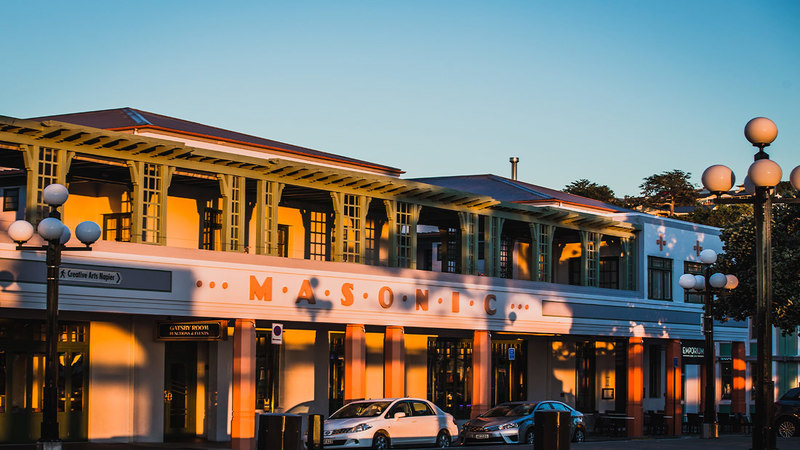
Visiting Napier in New Zealand is like walking around a movie set. After being almost destroyed by an earthquake in the 1930s, the town was completely rebuilt using the most popular architectural styles of the time. The picturesque seaside settlement is a unique open-air gallery that is widely regarded as one of the world’s best collections of Art Deco architecture. The best way to explore Napier is on a guided tour which uncovers the story behind the town, explores the historic streetscapes, and peeks inside the interiors of some buildings which aren’t usually accessible to the public. While you’re walking around town, don’t forget to look up as some of the most beautiful sections of Art Deco architecture are above you.
See a pooping sculpture in Hobart
Jump on a ferry for a scenic trip to MONA – the Museum of Old and New Art – which is home to a collection that will challenge your concept of art. One of the most famous pieces fuses art with science to create a mechanical and biological sculpture that poops once a day. Along with plenty of other works that will make you say, “What on earth is that?”, you’ll also find sublime paintings, drawings, and cutting-edge video installations. The collection of extraordinary art is owned by just one man, David Walsh, a professional gambler and passionate art collector who describes his museum as “a subversive adult Disneyland”. MONA is eclectic, profound, beautiful, and occasionally confronting. Don’t miss it.
SEE THE SCULPTURE ON OUR HOBART AND TASMANIA SOUTHERN EXPLORER TOUR
Explore the taonga (treasures) at Te Papa
Te Papa, New Zealand’s national museum in Wellington, is filled with traditional Māori artefacts and contemporary taonga (treasures) like a shiny Britten V-1000 motorbike. Everyone is welcome to explore them and experience the mana (power) of the taonga held in Te Papa’s collections. Don’t miss Rongomaraeroa, the modern brightly coloured marae, which was created to provide an authentic yet inclusive communal meeting place for the twenty-first century. The marae is literally a work of art, showcasing Māori art and design with vivid carved ancestral images reflecting the occupations and origins of newcomers over the last two hundred years – farmers, educators, clergy, parents, artists – linked with design references from nearby Asia Pacific regions. It is stunning and has a palpable warmth and energy that draws visitors to it.
Visit the open-air museum at Port Arthur
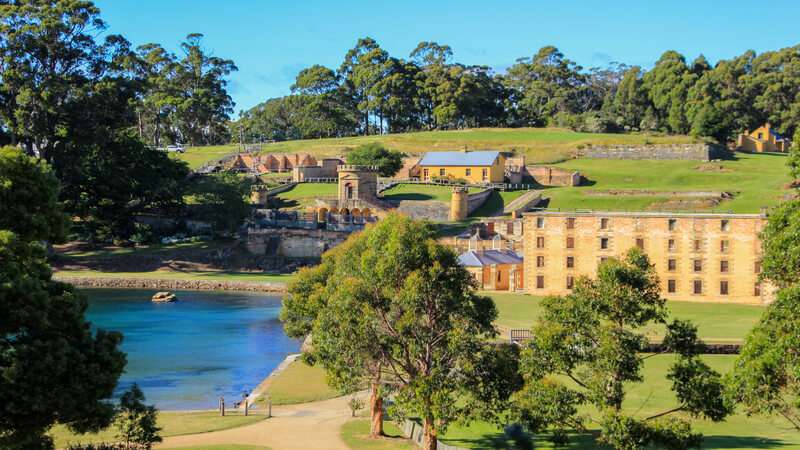
Port Arthur near Hobart provides a poignant and powerful reminder of Australia’s convict history. Now an open-air museum, this penal colony housed more than 12,000 convicts between 1830 and 1877. No high walls or barbed wire fences were needed to keep them inside as the prison’s remote location, surrounded by untamed Australian bush and the ocean, made it virtually impossible to escape. The historic site faces a sparkling bay and is as beautiful as it is melancholic, filled with fascinating stories which are revealed during a guided walking tour which is included in the cost of admission. After the tour, take time to explore on your own, soak up the scenery and reflect on the lives of those who were incarcerated at Port Arthur. Unlike the prisoners, you won’t be in a hurry to leave this captivating spot.
Visit the Buku-Larrnggay Mulka Art Centre
See paintings, sculptures, wood crafts, and cross-hatchings created by the men and women from the many Aboriginal groups in the area at the Buku-Larrnggay Mulka Art Centre at Yirrkala. From the mid 1950s, the traditional art works which were being created in this town began paving the way for the art world’s realisation that Indigenous Australian art should be valued in its own right and is equal to other global art forms. If you want to, you may choose to purchase an original work during your visit to take home.

